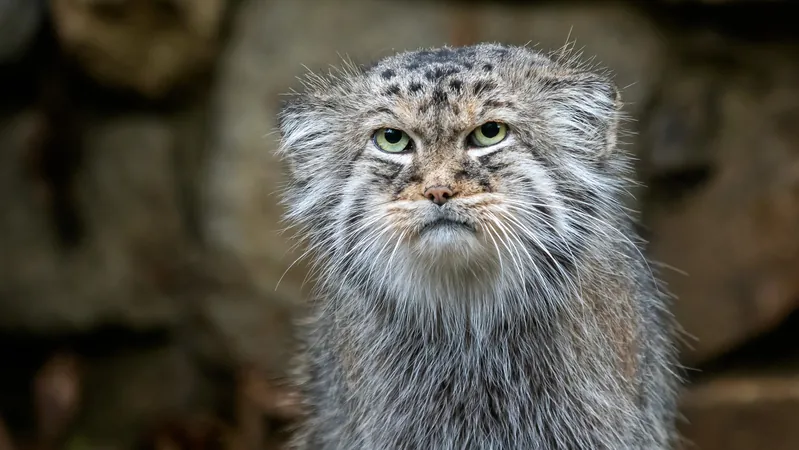
Meet Pallas's Cat: The Ancient Feline with a Unique Twist!
2025-08-23
Author: Jia
Discovering Pallas's Cat: Nature's Cozy Survivor
Meet the Pallas's cat, also affectionately known as the manul. This fascinating feline hails from the rugged terrains of Central Asia and is notorious for its quirky bark that resembles a small dog. With a lineage stretching back a staggering 5.2 million years, researchers believe it is one of the oldest cat species alive today, having branched off from a leopard ancestor.
A Unique Design for Harsh Climates
Beneath its fluffy, dense fur, the Pallas's cat is comparable in size to your average domestic cat. However, its thick coat is designed for survival in the freezing temperatures of Central Asia’s steppes and high-altitude grasslands. Its elusive nature makes it a rare sight, as this solitary creature prefers the quiet safety of rock crevices and burrows during daylight hours.
Nighttime Hunter: The Ambush Specialist
As dusk falls, the Pallas's cat emerges to hunt, showcasing its skills as an ambush predator. It patiently waits near rodent burrows, ready to pounce when its unsuspecting prey ventures out. Some resourceful individuals even use their paws to dig out meals—proof of their adaptable hunting strategies!
Master of Camouflage: Blending In
Spotting a Pallas's cat is no easy task. Their fur changes color with the seasons, allowing them to perfectly blend into their surroundings. With predominantly gray or light tan coats decorated with white-tipped hairs, they often blend seamlessly with the rocky and shrubby landscapes of their habitat.
An Ingenious Design for Secrecy
To enhance their stealth, Pallas's cats have rounded ears positioned low on their heads, allowing them to stealthily survey their surroundings without being detected. Their bushy tails, about half the length of their body and head combined, serve as a distinguishing feature.
A Voice Like No Other
Notably different from many small cats, Pallas’s cat boasts rounded pupils, which aid in judging distances while hunting. When startled or excited, it emits yelps reminiscent of a small dog, adding to its unique charm. Don’t worry though; they still purr and growl like any good feline!
Life in the Wild: A Brief Journey
In the wild, these incredible creatures typically enjoy a lifespan of eight to nine years. Their territory is impressively sizeable for such a petite feline, covering about 3.5 to 7 square miles (9 to 18 square kilometers), as they rely heavily on scent marking to establish their domain.



 Brasil (PT)
Brasil (PT)
 Canada (EN)
Canada (EN)
 Chile (ES)
Chile (ES)
 Česko (CS)
Česko (CS)
 대한민국 (KO)
대한민국 (KO)
 España (ES)
España (ES)
 France (FR)
France (FR)
 Hong Kong (EN)
Hong Kong (EN)
 Italia (IT)
Italia (IT)
 日本 (JA)
日本 (JA)
 Magyarország (HU)
Magyarország (HU)
 Norge (NO)
Norge (NO)
 Polska (PL)
Polska (PL)
 Schweiz (DE)
Schweiz (DE)
 Singapore (EN)
Singapore (EN)
 Sverige (SV)
Sverige (SV)
 Suomi (FI)
Suomi (FI)
 Türkiye (TR)
Türkiye (TR)
 الإمارات العربية المتحدة (AR)
الإمارات العربية المتحدة (AR)